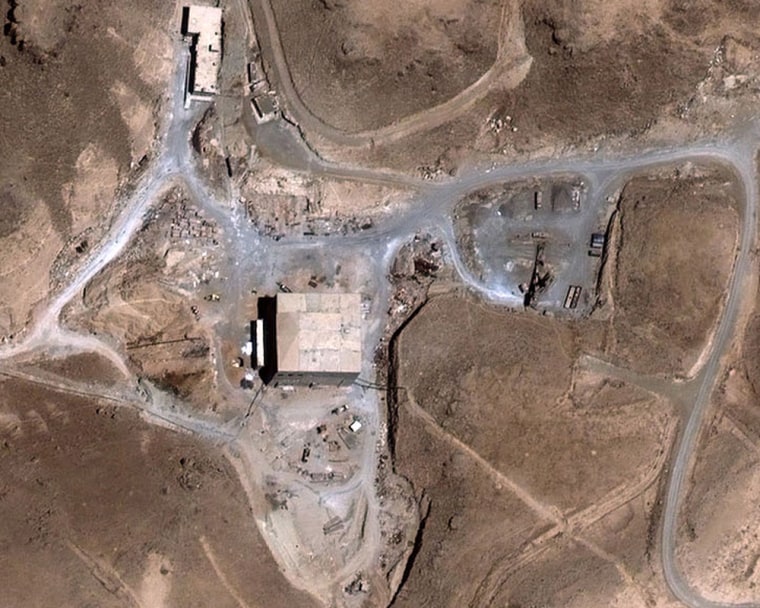U.N. nuclear sleuths looking into allegations that Syria is hiding secret atomic activities expressed hope Sunday that a fact-gathering trip to Damascus will be the start of a thorough investigation.
The International Atomic Energy Agency inspectors face a daunting task. Syrian officials are expected to place strict limits on where they go and what they see during their three-day visit.
Still, IAEA Deputy Director General Olli Heinonen spoke optimistically of the mission's chances before boarding the flight to Damascus on Sunday.
"I am sure I will be able to return" again to Syria, he told reporters, saying he and his two-man trip hoped to start to "establish the facts this evening."
Syrian authorities have placed strict constraints on media reporting on the visit and there was no official word by Sunday evening out of the Arab nation if the delegation had arrived.
Despite the low-key nature of the visit, the stakes are immense.
Damascus denies working on a secret nuclear program. But Washington hopes the U.N agency team will find evidence backing U.S. intelligence that a structure destroyed by Israeli war planes in September was a nearly completed plutonium-producing reactor.
Could mark the start of investigation
If so, the trip could mark the start of massive atomic agency investigation similar to the five-year inquiry into Iran's activities. What's more, the investigation could draw in countries such as North Korea, which Washington says helped Damascus and Iran. Media reports also have linked Iran with Syria's nuclear efforts.
After months delay, Syria agreed to allow the nuclear inspectors visit the bombed Al Kibar, but not three other locations suspected of harboring secret nuclear activities.
Syrian President Bashar Assad said earlier this month that visits to sites other than Al Kibar were "not within the purview of the agreement" with the International Atomic Energy Agency.
The agency has little formal inspection rights in Syria, which has declared only a rudimentary nuclear program using a small 27-kilowatt reactor for research and the production of isotopes for medical and agricultural uses.
Before the trip, both IAEA chief Mohamed ElBaradei and the United States urged Syria to show transparency.
"Syria was caught withholding information from the IAEA," Gregory L. Schulte, the chief U.S. delegate to the IAEA, told The Associated Press. "Now Syria must disclose the truth about Al Kibar and allow IAEA's inspectors to verify that there are no other undisclosed activities."
Diplomats accredited to the International Atomic Energy Agency, or IAEA, told the AP that the agency only learned a few days ago it would be able to bring ground-penetrating radar needed to probe below the concrete foundation of a new building erected on the site of the bombed facility.
It also was unclear how much freedom inspectors would have to move around the site, said the diplomats, who were briefed before the mission but who spoke with the AP on condition of anonymity because their information was confidential.
Remnants of water pipes
Specifically, the inspectors want to examine the remnants of water pipes leading to the site as well as a nearby pumping plant, in order to establish whether they match the specifics of the North Korean reactor prototype U.S. intelligence asserts was being built, the diplomats said.
They also want to tour sites where the debris from the bombing — and an apparent subsequent controlled explosion by the Syrians to obliterate the remains — was stored, the diplomats said.
The inspectors will be looking for minute quantities of graphite, which is used as a cooling element in the North Korean prototype allegedly being built with the help of Pyongyang. Such a reactor contains hundreds of tons of graphite, and any major explosion would have sent dust over the immediate area.
But if the Syrians are interested in a cover-up, they will have scoured the region to bury, wash away and otherwise remove any telltale traces.
One diplomat said the team would ask for information related to allegations of secret Syrian nuclear procurements, either from North Korea or the nuclear black market headed by renegade Pakistani scientist A.Q. Khan.
But the agency has little leverage, and its success will depend on what they are allowed to see and do.
